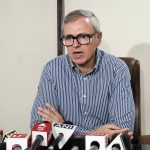Prof. Mohd Ashraf Ganai, Dr Imtiyaz A Wani and Dr Abid Hussain Bhat
‘‘We believe that Medical Care Alone Won’t Stop the Spread of Diabetes unless there is a comprehensive education program in place’’
Diabetes is now a major health challenge of the 21st century affecting over 400 million in the world. The prevalence of diabetes across the globe among adults over 18 years of age has increased from 4.7% in 1980 to 8.5% in 2014. Diabetes mellitus (DM) is a global epidemic and in an unrelenting manner, Type 2 diabetes is engulfing India, which has the second largest population with diabetes in the world.
Diabetes mellitus (DM), a chronic disease that affects how your body turns sugar (or glucose) into energy. When you eat, food is broken down into sugar then released into your bloodstream. Your pancreas converts the blood sugar into energy through a hormone called insulin. With diabetes, your body is either unable to make enough insulin or unable to use the insulin it produces.
DM refers to a group of disorders with hyperglycemia (high blood glucose) caused by a complex interaction of genetics and lifestyle changes. Uncontrolled diabetes can lead to several complications. People with diabetes have to face a cascade of risks associated with the nerves (Neuropathy), Kidney (Nephropathy), Heart, Eyes and even foot and toe amputations (surgical cutting). Life threatening infections are twice as much common as those without diabetes.
Treatments include medications and/or insulins and some types of transplantations that might be an option for a select number of patients who have Type 1 diabetes. Its prevention includes adopting a healthy lifestyle. You may have heard people talk about these things casually they have “diabetes” or that their “sugar is a little high”, giving a feeling that diabetes is not a serious disease. That is not correct, Diabetes is serious, but together we can defeat it.
With time, medical advances have led to a more sophisticated understanding of the causes of diabetes and new tools for managing it. However, we need to understand and accept the fact that better treatments have done little to halt the rise of the disease. There is no tool, no drug to counter the effects of poverty, pollution, stress, unhealthy food system, cities that are hard to navigate on foot and inequitable access to health care, particularly in our communities.
While looking around it seems our entire system is perfectly designed to give rise to diabetesand doctors don’t have the tools to tackle the social conditions people are grappling with. Is there a need to have relevant educational programs, improving access to healthy food, reconsidering the designs of cities, regulating urban growth and transportation networks is a question to address sooner than later.
At present, there are equal numbers of people living with undiagnosed T2DM likely to end up with complications before the detection of their illness. Unfortunately, many teenagers are now developing diabetes which was earlier thought to be a disease of older people; young adults are being diagnosed with it at some point in their lives.
Further, diabetes is also increasing among children & young adults. Currently, children with T2DM are usually diagnosed above the age of 10 years and in teens. Nearly 30% of India’s teenagers are obese, the increase in obesity in children and adolescents has been the most important reason for the emerging incidence of diabetes in children. Hormonal changes during puberty coupled with obesity are playing a major role. The children would usually have obesity, increasing waist circumference and darkening of the skin around the neck and axilla, a sign of insulin resistance. In the severest form, the child presents with polyuria, polydipsia, and weight loss.We as clinicians and scientists feel that we should have comprehensive programs in place to educate and aware people about its causation, treatment, management and to have an improved quality lifestyle, particularly in younger generation to have better tomorrow.
There are evidences of gaps and challenges in the care of people with diabetes. The stand out areas includes lack of diabetes educators, education programs and fragmented care. In this direction, a Joint ‘‘Diabetes Educator Programme’’ has been initiated between SKIMS, Soura and University of Kashmir under a signed Memorandum of Understanding (MoU) between University of Kashmir and Sher-I-Kashmir Institute of Medical Sciences (SKIMS).
World Diabetes Day (WDD): Each year, 14 November is celebrated as World Diabetes Day. It was established by the International Diabetes Federation (IDF) with the support of World Health Organization (WHO) in 1991, and became an official United Nations Day in 2006. It is marked every year on 14 November, the birthday of Sir Frederick Banting, who co-discovered insulin along with Charles Best in 1922.
WDD Theme for the year 2022: The theme for this year is ‘‘Education to Protect Tomorrow’’. This year’s campaign focuses on the need for better access to quality diabetes education for health professionals and people living with diabetes.
Diabetes education is the key to self-management of diabetes-related problems. It is essential to make family members aware of the increasing health burden and economic dimension of the obesity epidemic. Prevention and treatment of obesity and type 2 diabetes mellitus in youth should become one of the prime targets of public health intervention programs. If you have diabetes in your family, learn about the risks, the warning signs to look out for and what you can do to prevent diabetes and its complications.
Many cases of type 2 diabetes can be prevented by adopting a healthy lifestyle. Reducing your family’s risk starts at home. When a family eats healthy meals and exercises together, all family members benefit and encourage behaviours that could help prevent type 2 diabetes.
If you have any of the following risk factors it is recommended to get your blood glucose levels tested.
• Family member is having diabetes (Mother, father, brother, sister).
• You were found to have Pre-Diabetes during routine testing.
• You are overweight or your waist circumference is more than 90cms(male) or more than 80cms (female).
• You have had diabetes during pregnancy or if your baby weighed more than 4 kgs at birth
• You are having polycystic ovary syndrome (PCOS).
• You have high blood pressure or abnormal cholesterol levels (especially high triglycerides with low HDL).
• If you are older than 45 years, it is recommended to get your blood sugar level tested even if you do not have any risk factors
Some important points to remember:
Eat a healthy diet and maintain a healthy weight.
• Eat more vegetables and fruits and less candy and sweets.
• Drink more water and less sugary drinks.
• Cook more meals at home.
Exercise for at least 30 minutes a day.
• You can break up the 30 minutes of exercise during the day.
• Engage in aerobics or strength training activities (for example walking or gardening).
See Your Doctors Regularly.
• Check your A1C, blood pressure and cholesterol.
• Test your urine for signs of kidney disease.
• Check your foot for tenderness and/or sores.
• Check your eyes once a year.
• Address any questions or concerns you may have.
World Diabetes Day 2022 celebrations are held globally, many institutions and other organizations are organizing and hosting events and activities. SKIMS and GMC Srinagar are also celebrating WDD-2022 by organizing diabetes awareness workshops, series of lectures, panel discussions etc. You can look for other local WDD events, it is time to get involved with such events to educate and equip yourself with facts, figures and knowledge for a better tomorrow.








